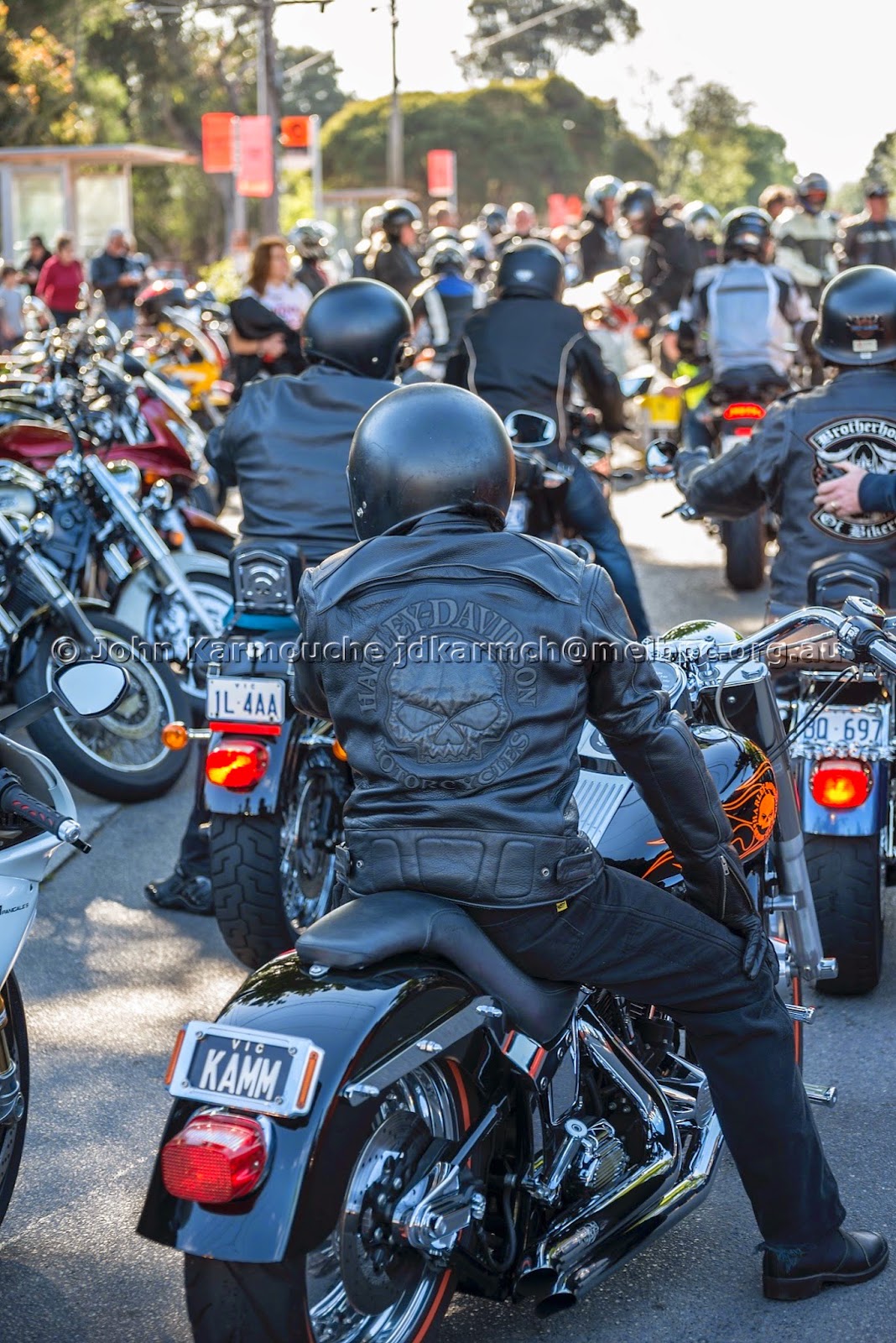Today, the Law in Victoria came into force that makes it compulsory that all Learner Motorcycle Riders must wear a High Visibility vest.
Today, Car Drivers can no longer use the excuse Sorry Mate I Didn't See You if they hit a Learner Motorcycle Rider.
Today, the level of Driver Responsibility just went up a notch.
Will it change anything? In the experience of the author, who has clocked up over 1 Million Kms riding a motorcycle, who has tried the HiViz Clothing approach, I doubt that it will make any difference. Being seen on a motorcycle demands that one do far more than just look bright. In fact, in my experience - that can make things worse.
Compulsory high visibility (Hi-Viz) clothing for Learner
Motorcycle Riders may result in more rider road fatalities. In fact, I would go
even further and say that it will increase the risk for Learner Motorcycle
Riders.
That’s an outlandish claim, I hear you say? But, Hi-Viz must
be a great idea because it makes motorcycles more visible as the Victorian
Government claims. Well, based on my experience over 40 years and some 1
million kms on a motorcycle I know that they are wrong. What’s worse is the truth that Hi-Viz has its down side and is not the savior non-motorcycle riders
believe it to be.
Before I disclose the reasoning behind by hypothesis, let me
explain the important elements, which have been overlooked by the people who
came up with what I can only describe as a “Thought Bubble” which is not backed
by any quantitative science.
The starting point in this debate is that motorcycle
manufacturers chose, voluntarily, to hard wire headlights-on into all
motorcycles manufactured kin the modern era (post 1980). But, even with my
motorcycle’s headlight on car drivers frequently fail to see me. This
fact is supported by the science and an analysis of the motorcycle road toll.
There are many occasions when wearing Hi-viz just won’t
work, is of little use and does not make a rider more visible. Let’s examine
these:
1.
Approaching
Head On. Given that my motorcycle headlight is already on, both in
the daytime and at night, wearing additional Hi-viz makes no difference. When
viewed against the setting sun, or against a bright background it guarantees
that a rider will not be seen.
2.
At
a Distance. A moving motorcycle approaching at a distance will appear
like a very small dot. Even if it is bright its approach speed and distance
from the observer is difficult to get right. Most car drivers overestimate the
distance between them and an approaching motorcycle. So, even if they have seen
the motorcycle, Hi-viz won’t help here.
3.
Driver
Blind Spots. Car drivers have at least six distinct blind spots, into
which small objects like motorcycles become obscured. In heavy traffic, even a
brightly coloured object is even harder to see as it blends in with other
brightly coloured cars, or as it becomes hidden by other larger objects. Again,
Hi-viz doesn’t help here.
4. Approaching from Behind. All
motorcycles, with their hard wired headlights-on, have an illuminated brake
light. Again, this should be enough to negate the benefit of Hi-viz. Car
drivers get the distance wrong when approaching a single point illuminated object.
In my experience, I have learnt that car drivers are looking for familiar
objects like other cars. Throw a small object into the mix and their brain
always gets it wrong. Again, Hi-viz won’t help here.
The science behind why the human brain does and does not see
things is something well understood by Illusion Artists. People look, but their
brains fill in the gaps and the result is that some detail gets left out. Our
peripheral vision (that outside the central point of our direct line of sight)
is low definition. Our brain up scales this low resolution to give us the
impression that everything is in focus by adding things it predicts should be
there. Much of what we think we see is not 100% correct. More likely it’s far
less than we believe. Thus in a split second – our brain can cause us to get it
all wrong – horribly wrong. This is something that Hi-viz won’t help and on
some occasions will make worse. How can I prove that? I have experienced it
hundreds if not thousands of times over the last 40 years.
False Sense of Security. Compulsory
Hi-viz supports the false hypothesis that a motorcycle rider will always be
seen. It sends the wrong message to the most vulnerable – Learner Motorcycle
Riders. By telling Learner Riders that they must wear Hi-viz, the Victorian
Government is telling them that this is something that will guarantee their
safety. “The Government supports it, they must be right,” is the view they will
form. For those who do fall for this trap and therefore expect Hi-viz to keep
them safe, the risk of being involved in an accident will increase.
Voluntary or
Compulsory? I am not anti Hi-viz per se. Hi-viz is something that must
be understood by the wearer. A Learner Rider is not the best start point for
Hi-viz. The decision to wear Hi-viz should only ever be voluntary. I know many
experienced riders who wear Hi-vz. But they also have a thorough understanding
of the factors I have outlined and incorporate it into their overall safety
regime. I choose not to wear Hi-viz, and therefore adapt my own riding
techniques and habits to reduce the risk of my not being seen by car drivers.
Education of both Car Drivers and Motorcycle Riders as to
how their brains interpret what they see is far superior to any move to forcing
any motorcycle rider to wear Hi-viz.
















